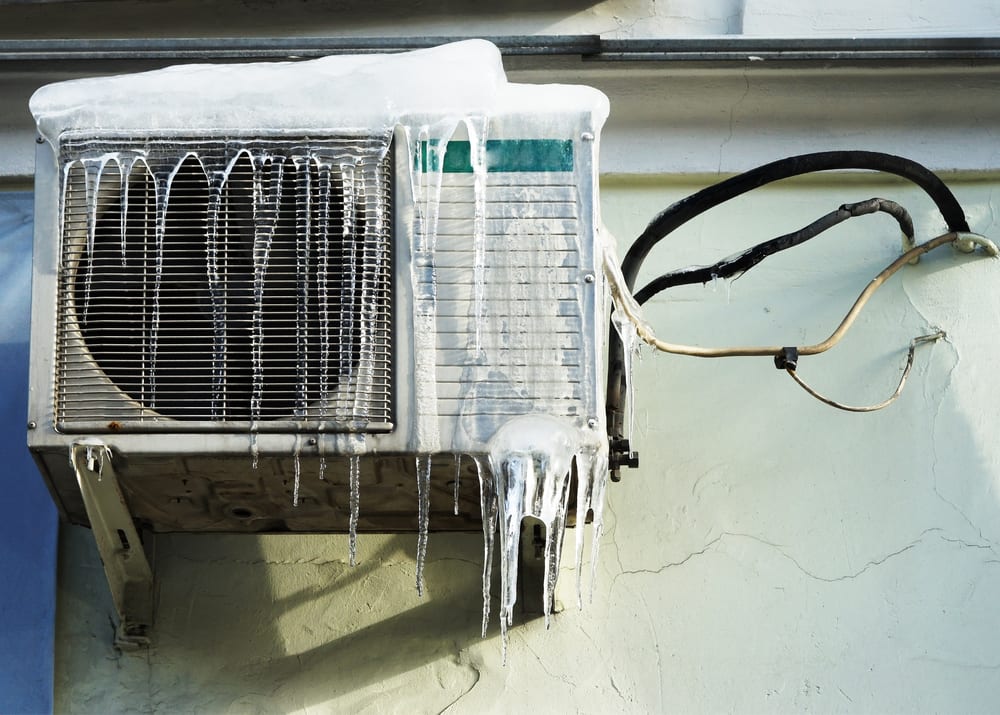Listed here in the next paragraph you can discover some exceptional tips concerning What Causes AC Pipes To Freeze?.

Introduction
Discovering that your air conditioning pipeline is frozen can be worrying, especially during hot summer months when you count on your air conditioner the most. Understanding what to do in such a situation is essential to prevent further damage to your air conditioning system and guarantee your comfort inside your home.
Understanding the Causes
Several variables can add to the freezing of an AC pipeline. Comprehending these causes can assist you address the problem efficiently.
Absence of Airflow
One common source of a frozen air conditioner pipe is inadequate air movement. When the airflow over the evaporator coil is limited, it can cause the coil to drop below freezing temperature level, leading to ice development on the pipeline.
Low Refrigerant Levels
Inadequate cooling agent levels in your AC system can additionally cause a frozen pipeline. Low refrigerant degrees can trigger the pressure in the system to drop, resulting in the freezing of wetness on the evaporator coil.
Cold Weather Conditions
In chillier environments, freezing temperatures outside can contribute to the freezing of air conditioner pipelines. If your AC system is not appropriately shielded or if there are leakages in the ductwork, cool air can penetrate the system, causing the pipeline to ice up.
Dirty Air Filters
Unclean or clogged up air filters can limit air movement in your air conditioner system, bring about numerous problems, including a frozen pipeline. It's vital to change or clean your air filters routinely to ensure correct air flow and prevent ice build-up.
Indications of a Frozen AC Pipe
Identifying the indicators of an icy a/c pipe is important for timely activity.
Minimized Airflow
If you discover a significant decline in airflow from your vents, it can suggest an icy pipeline.
Ice Buildup on the Pipe
Noticeable ice buildup on the cooling agent line or the evaporator coil is a clear indication of an icy AC pipe.
Unusual Sounds from the Unit
Uncommon audios, such as hissing or gurgling, originating from your a/c unit can signal that there's ice present on the pipeline.
Immediate Actions to Take
When confronted with a frozen AC pipeline, it's essential to act swiftly to avoid further damage to your air conditioning system.
Switching off the a/c
The primary step is to shut off your air conditioner to stop the system from running and intensifying the issue.
Looking for Blockages
Inspect the location around the indoor system for any blockages that might be blocking air movement, such as furniture or drapes.
Defrosting the Pipe
You can utilize mild methods like putting towels taken in cozy water around the frozen pipe to aid thaw it slowly.
Safety nets
Taking preventive measures can aid avoid future incidents of an icy air conditioning pipeline.
Regular Maintenance Checks
Arrange normal upkeep talk to a specialist HVAC technician to make sure that your air conditioner system is running efficiently.
Changing Air Filters
On a regular basis change or cleanse your air filters to stop air movement restrictions and preserve optimum efficiency.
Protecting Exposed Pipes
If your AC pipes are revealed to cold temperatures, think about protecting them to stop freezing throughout winter months.
Seeking Professional Help
If DIY methods fail to deal with the issue or if you're unsure about how to continue, it's ideal to seek support from a qualified HVAC technician.
When DIY Methods Fail
If your efforts to thaw the pipe or address other concerns are not successful, it's time to contact a professional.
Relevance of Hiring a Professional HVAC Technician
A licensed HVAC specialist has the knowledge and devices needed to diagnose and fix issues with your a/c system safely and successfully.
Conclusion
Taking care of an icy air conditioning pipeline can be an aggravating experience, yet knowing exactly how to react can help reduce damages and recover comfort to your home. By comprehending the reasons, identifying the signs, and taking prompt action, you can successfully resolve the issue and avoid future incidents.
Frozen AC Line: Why It Happens & What To Do About It
A frozen AC line can be a rather peculiar sight in a place like Phoenix, Arizona where nothing ever freezes. In this post, we’ll discuss what makes an air conditioner line frozen – and what you can do about it.
Dirty Air Filters
Did you know that you should be cleaning or replacing your air filters on a monthly basis? Failing to do this can result in airflow issues that, in turn, cause your evaporator coils and lines to freeze over. You’ll notice a buildup of ice on both components, although the buildup on your pipes will, of course, be more evident unless you open your air condition up to reveal the coils.
What To Do About It
Give your air filter a good cleaning if it’s reusable. If not, replace the filter outright. Next, switch your air conditioner’s fan setting on and leave it there for 2-3 hours. This will draw warm air in, helping to thaw your evaporator coil. You can also check out this article for some tips on cleaning the coils themselves if you’d like to speed the process up. Before you switch the unit back to its normal state, make sure the supply vents are completely unobstructed and free of dust or other debris.
If you keep having this issue even after replacing your filters regularly, contact a local HVAC repair company and have them inspect your evaporator coil, ductwork, and any other components that may be at fault. If you live in the Phoenix, Arizona area, give American Home Water and Air a call.
Low Refrigerant Levels/Leakage
What To Do About It
Contrary to what air conditioner “recharge” companies often tell their clients about refrigerant, it should never need to be simply refilled. You see, refrigerant runs in what experts refer to as a “closed loop.” Refrigerant really shouldn’t be leaving that loop. If it is, you’ve got a leak.
Paying someone to come and pump more refrigerant into your system (aka “recharge” it) isn’t the solution. Doing that will simply kick the can down the road. Besides, refrigerant leaks can be harmful to the environment and people in your home.
Rather, you need to take care of the leak with the help of a technician. Check out this article for some more information about dealing with air conditioners that are leaking refrigerant. Before you contact a technician, switch your thermostat to the off position. Then, switch the fan setting on and let it run for 2-3 hours so the unit can thaw.
Improper Temperature Setting
Improper temperature settings can also cause a drop in your air conditioner’s pressure. What many people don’t realize is that air conditioners are actually designed to run when temperatures have fallen above roughly 60 degrees Fahrenheit. If you run the unit when it’s cold outside, you’ll run into many issues, including frozen components.

As a keen reader on What Do I Do If My AC Pipe Is Frozen, I figured sharing that excerpt was essential. Are you aware of another person who is in the market for the subject? Please feel free to promote it. I am grateful for your time. Please pay a visit to our site back soon.
Click Here
Comments on “What to Handle a Frozen AC Pipe - Critical Measures for Recovery”